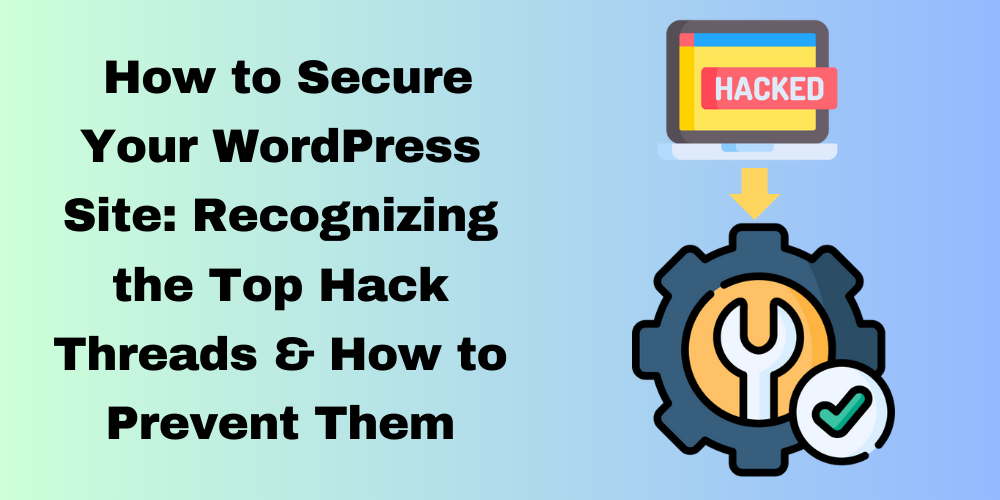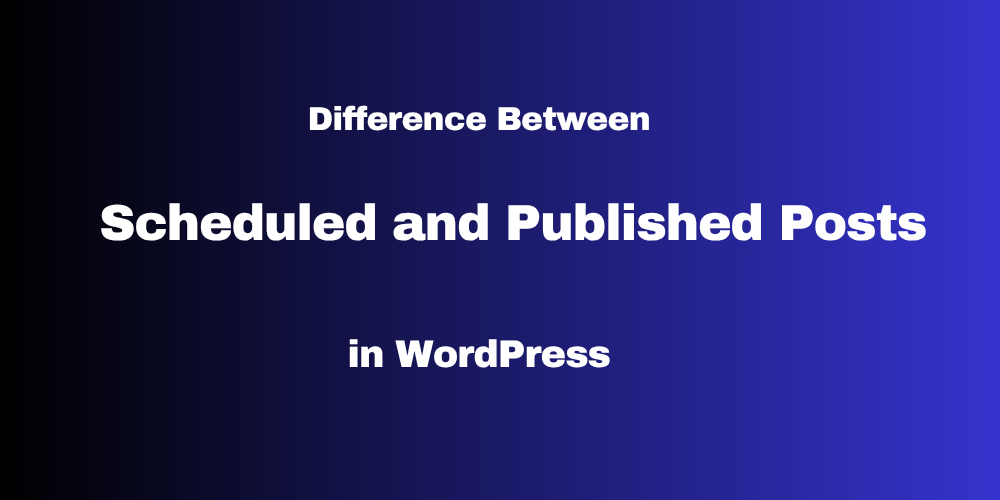Table of Contents Overview Ultimate Auction Pro Auctions Made Easy for WooCommerce Auctions for WooCommerce…
How to Secure Your WordPress Site: Recognizing the Top Hack Threads & How to Prevent Them

Table of Contents
- Overview
- Malicious Plugin Exploits
- Theme Vulnerabilities
- Cross-Site Scripting (XSS) Attacks
- SQL Injection (SQLi) Attacks
- Brute Force Attacks
- File Inclusion Vulnerabilities
- Cross-Site Request Forgery (CSRF)
- Phishing Attacks via Fake WordPress Login Pages
- Backdoor Attacks
- Server-Side Attacks
- Conclusion
Overview
WordPress powers millions of websites worldwide, making it a top target for hackers. Cybercriminals often exploit vulnerabilities in themes, plugins, and other WordPress components to gain unauthorized access. A successful attack can lead to traffic redirection, data theft, or a compromised user experience. This post covers common vulnerabilities like WordPress hacked redirects and site hacks, and offers advice on how to fix and prevent a hacked WordPress site.
1. Malicious Plugin Exploits
Plugins extend WordPress functionality, but outdated or poorly coded plugins can introduce security risks.
Attack Process:
Hackers regularly scan for outdated plugins with known vulnerabilities. Once they find one, they inject malicious code into the plugin, which can redirect visitors, install malware, or gain access to the site’s backend. In some cases, compromised plugins can also affect multiple sites using the same plugin.
Prevention:
- Update Plugins Regularly: Keep plugins updated with the latest patches.
- Use Trusted Plugins: Only download plugins from trusted sources like the official WordPress repository.
- Avoid Abandoned Plugins: Do not use plugins that haven’t been updated in a while.
- Disable Unused Plugins: Remove plugins that you don’t use to reduce potential security risks.
2. Theme Vulnerabilities
Outdated or poorly coded themes are another significant security risk. A compromised theme can allow attackers to take control of your site and perform malicious activities, such as distributing malware or altering how the site behaves.
Attack Process:
- Hackers can exploit flaws in your theme’s code to gain unauthorized access or distribute malware.
- A compromised theme may also provide an attacker with an opportunity to install backdoors, leading to long-term site vulnerabilities.
Signs of a Hack:
- Unexpected redirects, unusual behavior on your site, or unfamiliar code appearing in your theme’s folder could indicate a compromised theme.
Prevention:
- Use Well-Maintained Themes: Always choose themes that are regularly updated by reputable developers.
- Update Themes Regularly: Keep your theme updated to fix vulnerabilities and improve security.
- Audit Theme Files: Regularly check your theme files for unfamiliar code or changes.
3. Cross-Site Scripting (XSS) Attacks
Cross-Site Scripting (XSS) attacks allow hackers to inject malicious scripts into your site, often through user input fields like comments or contact forms. These attacks can lead to data theft, unauthorized changes, or site redirects.
Attack Process:
- Attackers inject malicious scripts that execute in a visitor’s browser when they interact with certain parts of the site, like submitting a form or leaving a comment.
- These scripts can be used to steal user data, execute malicious actions on behalf of the user, or perform phishing attacks.
Prevention:
- Input Validation and Sanitization: Always validate and sanitize user inputs to prevent malicious scripts from being executed.
- Use Security Plugins: Plugins like Wordfence or Sucuri offer XSS protection and can block harmful activities.
- Regular Security Audits: Continuously monitor your site for suspicious or unauthorized activity.
4. SQL Injection (SQLi) Attacks
SQL injections exploit vulnerabilities in the WordPress database to manipulate site data, steal sensitive information, or alter content. These attacks can be devastating if not prevented.
Attack Process:
- Hackers use unsecured input fields (such as search or login forms) to inject malicious SQL commands.
- These commands can modify or delete data, steal information, or even grant attackers full access to the website’s database.
Signs of a Hack:
- Unusual database errors, missing data, or strange queries in your server logs may indicate an SQL injection attack.
Prevention:
- Use Secure Coding Practices: Implement parameterized queries to ensure user inputs are properly sanitized before being used in database queries.
- Install a Web Application Firewall (WAF): A WAF can help protect your site by blocking malicious traffic.
- Update WordPress Core: Ensure the WordPress core, as well as any plugins and themes, are always up to date to prevent known vulnerabilities.
5. Brute Force Attacks
Brute force attacks occur when automated scripts or bots repeatedly attempt to guess your admin password by trying various combinations. It is one of the most common methods hackers use to break into WordPress sites.
Attack Process:
- Bots systematically try every possible password combination, often targeting weak or default credentials like “admin” or “password.”
Signs of a Hack:
- A high number of failed login attempts in a short time is a clear sign of a brute force attack.
Prevention:
- Use Strong Passwords: Ensure your passwords are long, unique, and contain a mix of letters, numbers, and special characters.
- Enable Two-Factor Authentication (2FA): Adding a second layer of protection greatly reduces the chances of successful brute force attacks.
- Use CAPTCHA or reCAPTCHA: Implement CAPTCHA on the login page to block automated login attempts.
6. File Inclusion Vulnerabilities
Local File Inclusion (LFI) and Remote File Inclusion (RFI) attacks occur when hackers exploit how WordPress handles files. These attacks can inject malicious files into your site and grant attackers access to sensitive information.
Attack Process:
- Attackers inject malicious files through vulnerabilities in file upload or inclusion mechanisms.
- These malicious files can execute commands that allow hackers to take control of the site or access sensitive data.
Signs of a Hack:
- Unfamiliar files appearing in your file manager or strange file names can indicate an attack.
Prevention:
- Validate and Sanitize File Inputs: Ensure that only allowed file types and sizes are uploaded to your site.
- Disable Unnecessary PHP Functions: Turn off functions like
exec(),shell_exec(), andinclude()if not needed. - Regularly Monitor File Uploads: Check the file upload directories for suspicious files and monitor uploads closely.
7. Cross-Site Request Forgery (CSRF)
CSRF attacks trick authenticated users into performing unauthorized actions on a website without their knowledge, which can lead to unwanted changes to the site.
Attack Process:
- Attackers exploit a logged-in user’s session by sending malicious requests on their behalf, potentially causing unwanted actions like changing settings or redirecting traffic.
Signs of a Hack:
- Unexpected changes to settings or user permissions, particularly if you did not make the changes, could indicate a CSRF attack.
Prevention:
- Use Anti-CSRF Tokens: Ensure all forms and sensitive actions use anti-CSRF tokens to verify requests.
- Validate Requests: Check that all requests come from trusted sources and have been initiated by the user.
8. Phishing Attacks via Fake WordPress Login Pages
Phishing attacks trick users into entering their WordPress login credentials on fake websites that resemble legitimate login pages.
Attack Process:
- Attackers create counterfeit login pages that look identical to the WordPress login page. When users enter their credentials, the information is captured and sent to the attacker.
Signs of Phishing:
- An unfamiliar URL for the login page or being redirected to a suspicious page may indicate a phishing attempt.
Prevention:
- Use SSL Encryption: Ensure your login page uses SSL to encrypt data transmission.
- Enable Two-Factor Authentication (2FA): Adding 2FA makes it harder for attackers to use stolen credentials.
9. Backdoor Attacks
Backdoor attacks allow hackers to gain unauthorized access to your WordPress site without needing credentials. These attacks often remain undetected for a long time.
Attack Process:
- Hackers exploit vulnerabilities in themes, plugins, or core files to install hidden backdoor scripts that provide future access to the site.
Signs of a Hack:
- Unauthorized admin accounts, unexplained changes to settings, or suspicious files are signs of a backdoor attack.
Prevention:
- Regularly Scan for Backdoors: Use security plugins like Sucuri, Wordfence, or MalCare to scan for hidden backdoors.
- Monitor Site Activity: Look out for unusual behavior or changes in user accounts.
10. Server-Side Attacks
Server-side attacks target the server hosting your WordPress site. Hackers exploit weak passwords, unsecured SSH keys, or vulnerabilities in server software to gain control over the entire server.
Attack Process:
- Attackers may gain full access to the server by compromising weak SSH passwords or exploiting server software flaws.
Signs of a Hack:
- Unusual server activity, resource spikes, or notifications from your host about a potential breach may indicate a server-side attack.
Prevention:
- Secure Your Server: Use strong SSH keys, disable unused services, and ensure your server software is regularly updated.
- Use a Web Application Firewall (WAF): A WAF can help block malicious traffic before it reaches your server.
Conclusion
WordPress sites are frequent targets for a wide range of cyberattacks, from plugin exploits to server-side breaches. The key to keeping your site secure lies in regular updates, strong passwords, and security plugins. If your site is compromised, prompt action is essential to restore it and prevent further damage. By following best practices and maintaining a proactive security stance, you can help protect your WordPress site from these common threats.







This Post Has 0 Comments